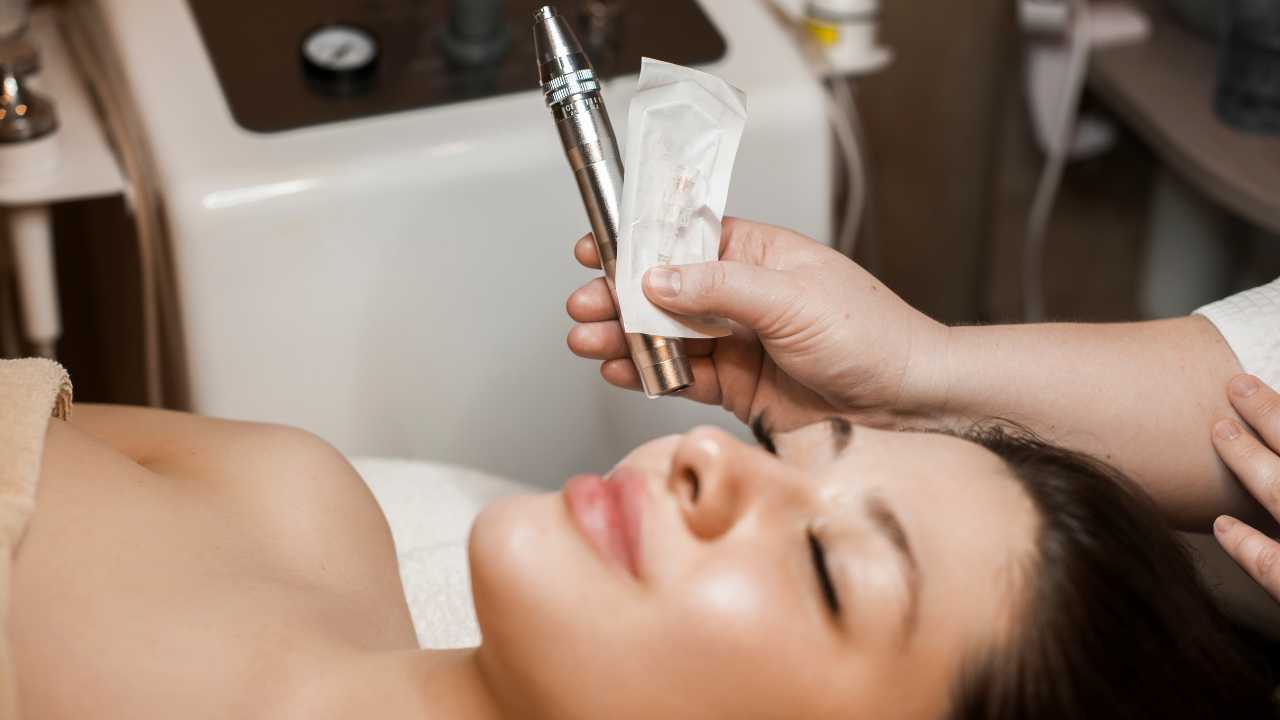Rosacea is a chronic inflammatory skin condition that primarily affects the face, causing redness, flushing, and the appearance of small, dilated blood vessels. While there is no known cure for rosacea, various treatment options exist to manage its symptoms and minimize flare-ups.
Microneedling, a minimally invasive procedure involving the use of tiny needles to create controlled micro-injuries in the skin, is emerging as a promising therapeutic approach for rosacea. In this article, we will explore the benefits, considerations, and potential outcomes of microneedling in managing rosacea.
Understanding Microneedling:
Microneedling, also known as collagen induction therapy, has gained popularity in recent years for its effectiveness in treating various dermatological conditions. The procedure involves the use of a derma roller or a pen-like device containing fine needles that penetrate the skin’s surface, creating microchannels. These controlled injuries stimulate the skin’s natural healing response, triggering collagen production and rejuvenation with natural skin glow.
Benefits of Microneedling for Rosacea:
- Reducing redness and flushing: Microneedling can help alleviate the persistent redness associated with rosacea. By stimulating collagen production, it improves the overall skin texture and tone, leading to a reduction in redness and flushing.
- Strengthening the skin barrier: Rosacea is often accompanied by a compromised skin barrier function, making the skin more susceptible to external triggers and irritants. Microneedling helps enhance the skin’s barrier by promoting the production of collagen and elastin, reinforcing the skin’s natural defense mechanisms.
- Minimizing the appearance of blood vessels: In some cases of rosacea, small blood vessels become visible on the skin’s surface. Microneedling can help reduce their prominence by stimulating collagen growth and improving overall skin texture, resulting in a smoother complexion.
Considerations for Microneedling in Rosacea:
Before undergoing microneedling for rosacea, it is crucial to consider the following points:
- Consultation with a dermatologist: It is essential to consult with a dermatologist experienced in treating rosacea before considering microneedling. They can evaluate your skin condition, determine the severity of rosacea, and recommend the most suitable treatment plan, which may include microneedling.
- Individual skin sensitivity: People with rosacea often have sensitive skin, which may react differently to various treatments. While microneedling is generally considered safe, it is crucial to assess your skin’s sensitivity and discuss any potential risks or side effects with your dermatologist.
- Treatment intervals and maintenance: Microneedling for rosacea typically requires a series of sessions spaced several weeks apart. The exact treatment plan and maintenance routine will vary based on individual needs and response to treatment. Your dermatologist will guide you through the recommended intervals and any necessary aftercare.
Potential Outcomes and Results:
Microneedling has shown promising results in managing rosacea, but it is essential to have realistic expectations. The outcomes will vary depending on the severity of rosacea, individual skin response, and adherence to the recommended treatment plan. Some potential results include:
- Reduced redness and flushing: Many individuals report a visible reduction in facial redness and flushing after undergoing a series of microneedling sessions.
- Improved skin texture: Microneedling can enhance the overall texture of the skin, making it smoother, more even, and less prone to irritation.
- Increased product absorption: The creation of microchannels during microneedling allows for better penetration of topical medications or skincare products, potentially enhancing their effectiveness in managing rosacea symptoms.
Conclusion:
Microneedling offers a promising treatment option for individuals with rosacea, providing a non-invasive approach to address the associated redness, flushing, and skin texture concerns. However, it is crucial to consult with a dermatologist experienced in treating rosacea to determine the most suitable treatment plan. With proper care and guidance, microneedling can be a valuable addition to the arsenal of therapies available to manage rosacea and improve the quality of life for those affected by this chronic condition.







